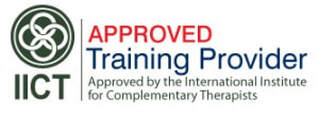Nail Fungal Treatment
Many people develop a fungal nail infection at some point in their life. It's not usually serious, but can be unpleasant and difficult to treat.
The infection develops slowly and causes the nail to become discoloured, thickened and distorted.
Toenails are more frequently affected than the fingernails.
The medical name for a fungal nail infection is onychomycosis.
Signs and symptoms of a fungal nail infection
A fungal nail infection may not cause any obvious symptoms at first.
As it progresses, the infection can cause:
Treatments for fungal nail infections
Treatment isn't always needed for a mild fungal nail infection because it's unlikely to cause any further problems and you may feel it's not worth treating. Whether you decide to have treatment or not, you should still practise good foot hygiene (see below) to stop the infection getting worse or spreading to others.
A procedure to remove the nail completely may be recommended in severe cases.
How soon will I have Clear Nails?
You will not see a result immediately, but rather over a period of months as the nail resumes healthy growth. Nails grow slowly, so you may not see a significant improvement for several months, but you should see a gradual growth of clear nail.
Will I need more than one Treatment?
Additional treatments may be recommended depending on the severity of the fungal infection. Your practitioner will talk with you about the possibility of having additional treatments and will also advise you on the proper care of your nails to minimize the risk of recurrence.
How do you get a fungal nail infection?
Most fungal nail infections occur as a result of the fungi that cause athlete's foot infecting the nails.
These fungi often live harmlessly on your skin, but they can sometimes multiply and lead to infections. The fungi prefer warm, dark and moist places like the feet.
You're more likely to get a fungal nail infection if you:
Preventing fungal nail infections
You can reduce your risk of developing a fungal nail infection by:
Many people develop a fungal nail infection at some point in their life. It's not usually serious, but can be unpleasant and difficult to treat.
The infection develops slowly and causes the nail to become discoloured, thickened and distorted.
Toenails are more frequently affected than the fingernails.
The medical name for a fungal nail infection is onychomycosis.
Signs and symptoms of a fungal nail infection
A fungal nail infection may not cause any obvious symptoms at first.
As it progresses, the infection can cause:
- discolouration of the nail – it may turn white, black, yellow or green
- thickening and distortion of the nail – it may become an unusual shape or texture and be difficult to trim
- pain or discomfort – particularly when using or placing pressure on the affected toe or finger
- brittle or crumbly nails – pieces may break off and come away completely
Treatments for fungal nail infections
Treatment isn't always needed for a mild fungal nail infection because it's unlikely to cause any further problems and you may feel it's not worth treating. Whether you decide to have treatment or not, you should still practise good foot hygiene (see below) to stop the infection getting worse or spreading to others.
A procedure to remove the nail completely may be recommended in severe cases.
How soon will I have Clear Nails?
You will not see a result immediately, but rather over a period of months as the nail resumes healthy growth. Nails grow slowly, so you may not see a significant improvement for several months, but you should see a gradual growth of clear nail.
Will I need more than one Treatment?
Additional treatments may be recommended depending on the severity of the fungal infection. Your practitioner will talk with you about the possibility of having additional treatments and will also advise you on the proper care of your nails to minimize the risk of recurrence.
How do you get a fungal nail infection?
Most fungal nail infections occur as a result of the fungi that cause athlete's foot infecting the nails.
These fungi often live harmlessly on your skin, but they can sometimes multiply and lead to infections. The fungi prefer warm, dark and moist places like the feet.
You're more likely to get a fungal nail infection if you:
- don't keep your feet clean and dry
- wear shoes that cause your feet to get hot and sweaty
- walk around barefoot in places where fungal infections can spread easily, such as communal showers, locker rooms and gyms
- have damaged your nails
- have a weakened immune system
- have certain other health conditions, such as diabetes, psoriasis orperipheral arterial disease
Preventing fungal nail infections
You can reduce your risk of developing a fungal nail infection by:
- keeping your hands and feet clean and dry
- wearing well-fitting shoes made of natural materials and clean cotton socks – these will allow your feet to "breathe"
- clipping your nails to keep them short – don't share clippers or scissors with other people
- not sharing towels and socks with other people, and ensure your towels are washed regularly
- not walking around barefoot in public pools, showers, and locker rooms – special shower shoes are available to protect your feet
- replacing old footwear that could be contaminated with fungi
- treating athlete's foot as soon as possible to avoid the infection spreading to your nails
Beauty World Training Academy T/A Thai Medical Massage Cardiff.
Kitty formerly of Siam Thai Spa Cardiff @2011
Kitty formerly of Siam Thai Spa Cardiff @2011






